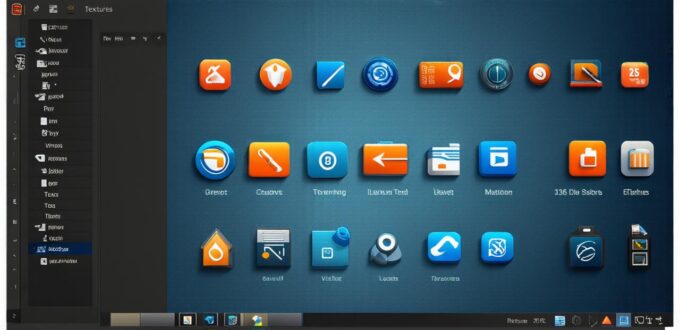15. File Compression Software:
File compression software is used to reduce the size of files for storage or transmission over the internet. These programs often include features such as lossless and lossy compression, password protection, and file splitting. Examples of file compression software include WinZip, 7-Zip, and RAR.
16. Screen Capture Software:
Screen capture software is used to create images or videos of computer screens. These tools often include features such as annotation, cropping, and editing. Examples of screen capture software include Snagit, Lightshot, and Camtasia.
17. Password Management Software:
Password management software is used to securely store and manage passwords for various accounts. These programs often include features such as auto-filling, two-factor authentication, and password generation. Examples of password management software include LastPass, Dashlane, and 1Password.
18. Web Browsers:

Web browsers are used to access the internet and view web pages. Examples of web browsers include Google Chrome, Mozilla Firefox, and Microsoft Edge.
19. Office Suites:
Office suites are collections of productivity applications such as word processors, spreadsheets, and presentations. These suites often include features such as collaboration tools, document management, and version control. Examples of office suites include Microsoft Office, Google Drive, and LibreOffice.
20. Video Conferencing Software:
Video conferencing software is used to facilitate real-time communication between individuals or groups over the internet. These programs often include features such as screen sharing, recording, and chat functionality. Examples of video conferencing software include Zoom, Skype, and Microsoft Teams.
Benefits and Drawbacks of Different Types of Application Software:
Integrated Development Environments (IDEs):
Benefits: IDEs provide a single interface for writing, debugging, and testing code, which can increase productivity and reduce the risk of errors.
Drawbacks: IDEs can be resource-intensive and may slow down computers or networks.
Version Control Systems (VCS):
Benefits: VCS allows developers to collaborate more effectively and revert changes if necessary, which can improve project management and reduce conflicts.
Drawbacks: VCS can be complex to set up and use, and may require additional training for team members.
Project Management Tools:
Benefits: Project management tools help software developers manage their projects from start to finish, which can increase productivity and reduce stress.
Drawbacks: Project management tools can be time-consuming to set up and configure, and may require additional training for team members.
Debugging Tools:
Benefits: Debugging tools help identify and fix errors in code, which can improve the quality of software and reduce the risk of bugs.
Drawbacks: Debugging tools can be complex to use, and may require specialized knowledge or skills.
Code Editors:
Benefits: Code editors offer a variety of features such as syntax highlighting, auto-completion, and code formatting, which can improve productivity and reduce the risk of errors.
Drawbacks: Code editors may not include all the features needed for certain types of software development, and may require additional plugins or extensions.
Document Management Systems (DMS):
Benefits: DMS allows organizations to manage and store documents such as contracts, invoices, and project plans, which can improve document control and reduce the risk of errors.
Drawbacks: DMS can be complex to set up and use, and may require additional training for team members.
Customer Relationship Management (CRM):
Benefits: CRM software helps organizations manage customer interactions and sales data, which can improve customer satisfaction and increase revenue.
Drawbacks: CRM software can be expensive to purchase and maintain, and may require specialized knowledge or skills to use effectively.
Human Resource Management Systems (HRM):
Benefits: HRM software helps organizations manage employee data such as payroll, benefits, and training records, which can improve employee engagement and reduce the risk of errors.
Drawbacks: HRM software can be complex to set up and use, and may require additional training for team members.
Antivirus Software:
Benefits: Antivirus software helps protect computers from malware such as viruses, worms, and ransomware, which can prevent data loss and reduce the risk of security breaches.
Drawbacks: Antivirus software can be resource-intensive and may slow down computers or networks.
Time Tracking Software:
Benefits: Time tracking software helps organizations accurately bill clients and monitor employee productivity, which can improve project management and increase revenue.
Drawbacks: Time tracking software may not accurately capture all types of work, and may require additional training for team members.
